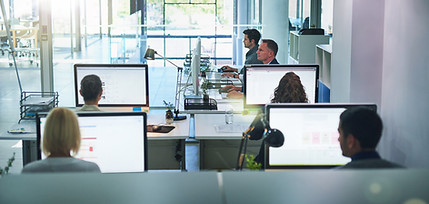Digital Information Access in Cultural Institutions
Why Share?
Section Subtitle
Every website has a story, and your visitors want to hear yours. This space is a great opportunity to give a full background on who you are, what your team does and what your site has to offer. Double click on the text box to start editing your content and make sure to add all the relevant details you want site visitors to know.
If you’re a business, talk about how you started and share your professional journey. Explain your core values, your commitment to customers and how you stand out from the crowd. Add a photo, gallery or video for even more engagement.
Why Share?
Section Subtitle
Every website has a story, and your visitors want to hear yours. This space is a great opportunity to give a full background on who you are, what your team does and what your site has to offer. Double click on the text box to start editing your content and make sure to add all the relevant details you want site visitors to know.
If you’re a business, talk about how you started and share your professional journey. Explain your core values, your commitment to customers and how you stand out from the crowd. Add a photo, gallery or video for even more engagement.
An Example of Standardized Data For Open Links in Museum Databases
(Fortier, Alexandre, Ménard, 2017)
In heterogeneous data structures of museum databases, interoperability requires advanced mapping and standards. Heterogenous databases, such as those created by museums, host metadata describing billions of objects and information known regarding the object. The data is not usable or exchangeable as it is stored in proprietary databases. (Fortier, Alexandre, Ménard, 2017).
CASE STUDY
In a case study by Fortier, Alexandre, and Ménard, they collected metadata and used IBM SPSS to group together the items and descriptions based on their content. The variations and lack of labels proved to be large problems.
Findings:
1. 3,133 Canadian museums with humanities collections stated at least a part of its collection online.
2. Only 266 museums offered online collections
3. 6.2% (n=176) of the museums in the sample describe their objects using structured metadata, while the remaining museums only offer a brief, textual description.
4. Very few metadata links could be made from descriptions such as a specific origin (geographic or cultural), period, movement, technique or category
5. Twenty-five metadata types of the 176 museums were identified.
Conclusion:
It is possible for metadata types to be grouped into ten metadata categories that cover the relative descriptions to the objects in discussion.
Thus, only10 metadata categories should be focused when creating databases to be accessible and shareable.


Open Up A Little...
Open-source access to digital information includes making the information public and free to use, copy and distribute. Sharing information is more powerful of a move than keeping information.
By making virtual databases interoperable, this also allows for searchable databases accessed through open portals, to be more successful. Searchable databases with open portals creates for means of independent study and trust. With only applying to sharing of information that doesn't violate personal rights to privacy, databases that can be accessed open and freely can create justice for the cause of open knowledge. To remain within the moral bounds of a safe society and to share what businesses or individuals usually keeps to themselves can be a difficult task. However, if users and creators work honorably with of "who" the data belongs to, as in the provenance of the object described digitally, and "how" that data is planned to be used, the ability to overcome the nature of selfish keeping exists.
From the above Case Study, we can already note the lack of digitization or virtual access in Museums, but this problem exists in many fields. The idea of sharing and being open is an idea that all companies and businesses should adopt, in transparency to their users. It is important that as we work to digitize information into databases, and rework the old databases the might previously exist, they must be created in ways that promote access and sharing.
These creative ways include using Keywords or MetaData Titles that will coincide with comparable databases, and having open portals for searchable access to these databases.
Why Share?

It should be an ethical goal to remove the barriers that exist between collections and those who want to access them. Virtual access to collections of data is to be practiced in all fields of study, as study should require cross-referencing of outsourced information.
When To Share?
OECD GUIDELINES GOVERNING THE PROTECTION OF PRIVACY AND TRANSBORDER FLOWS OF PERSONAL DATA
Collection Limitation, Data Quality Principle, Purpose Specification Principle, Use Limitation, Security Safeguards,
Openness, Individual Participation Principle, Accountability Principle
Author and Editor: Ellysha Leonard, 2021
